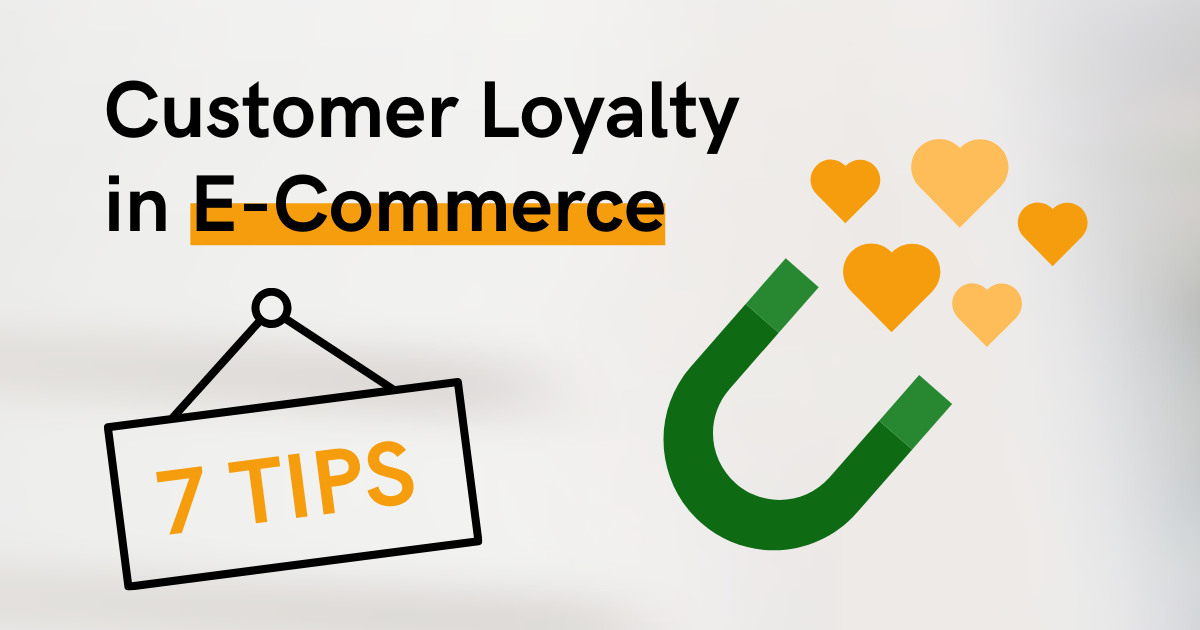7 Tips for Customer Loyalty in E-Commerce
Reading Time 4 mins | September 21, 2021 | Written by: Sabine Schymik

In the digital age, progress is as essential as customer satisfaction - these words are particularly true in e-commerce. Visitors access the online store via various channels and are quickly drawn to it. But they are just as quickly drawn to the competition, which never sleeps - and is just a click away from stealing your customers away.
As a result, e-commerce companies are always under pressure and are facing the challenge of constantly attracting new customers. Many companies, however, fail to do so and must start from scratch to win customers.
A better approach is to build up a solid customer base that returns and orders from you on a regular basis. In this way, you need a much lower marketing budget and can guarantee that you generate a permanently high turnover.
With the following blog post, we would like to share with you seven tips that you can use to gain more trust as an online retailer - and improve the customer experience and loyalty.
1. Convince with excellent service quality
One of the most successful tips for a successful customer retention in e-commerce consists of shining with the best possible service quality daily. One key indicator is transparency. Your customers must know at what times and through which channels they can contact the customer service with only a few clicks. This leads to a loyal customer.
Moreover, the customer service must act in a client-oriented manner, be polite, show understanding and offer useful solutions. Strategically designed customer retention measures consist of fully handling customer requests and collecting feedback.
It is helpful, for example, to send your customers a survey directly after the conversation. In this way, you can optimize the service quality long-term and ensure that your hard-earned customers are satisfied.
2. Coordinated product range
An often underestimated tip within the customer loyalty measures consists of offering a coordinated product range. But what does this mean exactly?
In the e-commerce sector, it is highly important to find and know your place. Among other things, this includes distinguishing yourself from the competition. If you are not able to find a niche, stand out from your peers competitors.
This tip is particularly significant, because the target group specific product range, together with innovative brand management, are the foundation of customer loyalty.
3. Content personalization on the product pages
Tip number three, “Content Personalization” offers a brand-new option, optimizing conversion rates through individually customized content - automated and scalable.
But what does content personalization in e-commerce actually mean? The goal of any online shop is to:
- Deliver added value
- Awaken emotions
- Trigger the visitor’s buying need
Our AX Semantics tool, personalized commerce, uses real-time user data and based on it, it generated individual content.
In this way, it is possible to make product descriptions and category pages as user-centric as possible. The advantages - you get hyper-personalized content, generate a unique user experience, and this offers you in return an unmatched competitive advantage.
The result: higher conversion rates, shopping carts with higher sales and fewer shopping cart cancellations.
4. Cashback & further bonus programs
Ultimately, for your e-commerce company, it is all about constantly buying new incentives. Among other things, this is possible with cashback and bonus programs.
These kinds of customer loyalty measures help you by triggering a regular desire among your customers. As with customer service, this also applies to such actions:
Simply explain to your customers, with the greatest transparency possible, how the program works.
5. Excellent Usability & Customer Experience
One of the most fundamental and, in the same time, important tip of our article is Usability und Customer Experience.
This primarily refers to the design and structure of your online store. This must meet today’s expectations and be intuitively usable for your customers. Your customer will return and place regular orders only when you ensure that customers can easily manage and find their way around without any problems.
But that is not all, since a user-friendly online store impresses customers with short loading times, simple searching and an excellent ordering process. The registration or login process is a central part and should be done with just a few clicks.
Here, in particular, you have to ensure that everything is functioning smoothly and can be done in as little steps as possible - especially since the risk of abandoning a purchase is extremely high in this case.
6. Make your e-commerce business sustainable
In order to compete against giants, such as Amazon & Co., you have to make your online business as sustainable as possible. More and more customers are paying attention to a sustainable lifestyle and demand the same from online shops. Therefore, this means you have to internalize the tip and implement relevant measures for customer loyalty.
On the path to green e-commerce, it is significant to avoid packaging waste and offer environmental-friendly dispatch options instead. Additionally, customers pay attention to the way returns are handled. A responsible and sustainable practice also includes the deliveries that are not accepted at the first attempt.
7. E-Commerce Personalization, Marketing Strategies & Social Media
As an online retailer, you are constantly facing the challenges of boosting personalization, building trust and offering the best possible customer experience. This ultimately includes creating an individualized marketing strategy. Focus on the e-commerce personalization factor and create a viable online marketing mix.
Moreover, you should consider interacting on social media right from the start, as you optimize the brand management and build trust in your brand through it. This also includes sharing user defined content, as well as creating a clear editorial plan. Here you have to gradually look how often you’d like to post and with help of which strategy you will get the most engagement
